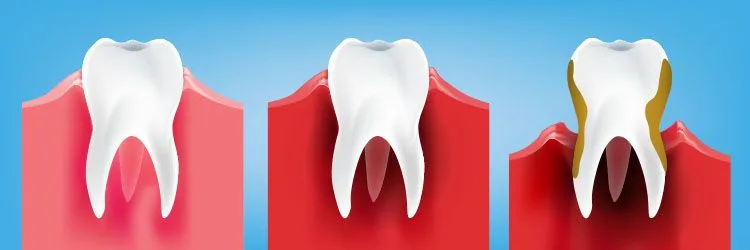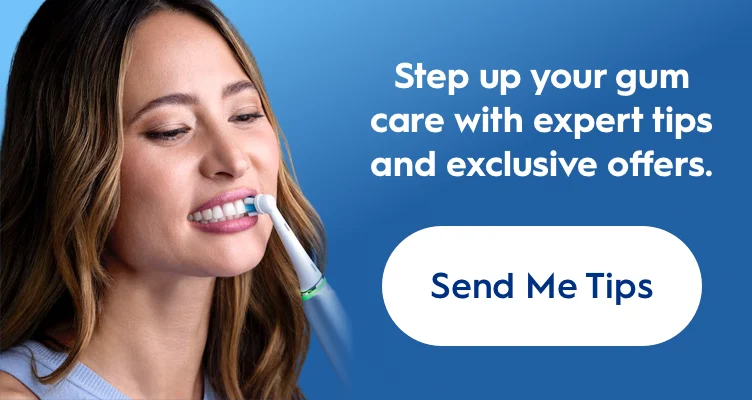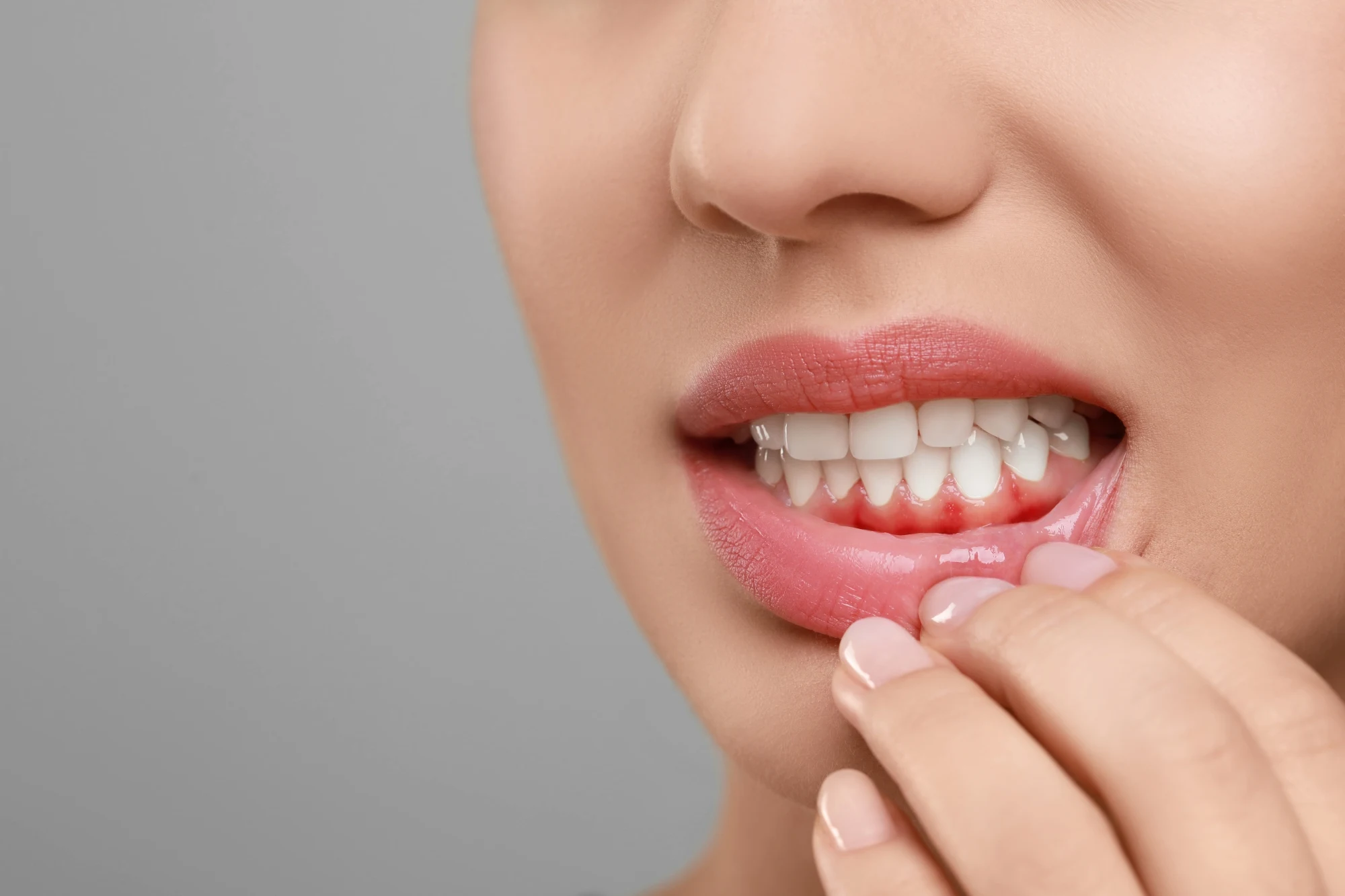
There are many preventative steps you can take to avoid gingivitis, or in some instances, reverse the effects once you’ve been diagnosed. Taking these steps can also protect against more serious gum disease (also referred to as periodontitis), tooth decay, and other more serious conditions.
Four steps to healthier gums
Regular brushing with an Oral-B® Electric Toothbrush has been proven to do a better job at improving your gum health compared to brushing with a regular manual toothbrush. For the best protection against gingivitis, follow this simple oral-health routine every day.
Brush your teeth for two minutes twice a day with an electric toothbrush and antibacterial toothpaste to remove plaque and lessen tartar build-up—and don’t forget to gently clean and massage the gums.
Floss at least once per day with the proper technique to get rid of food particles and plaque trapped between teeth.
Rinse with mouthwash to help prevent plaque from coming back and help kill the germs that cause gingivitis.
Visit your dental professional every six months for a thorough cleaning and check-up.
Asking your dentist about gingivitis
Going to the dentist and hygienist may be intimidating, but they will outline a personalized routine to help you achieve better oral health. If you are concerned with gingivitis, here are some questions you can ask your dental professional:
Do you think gingivitis is causing my symptoms?
What kinds of tests, if any, do I need?
What steps can I take at home to keep my gums and teeth healthy?
Related Articles
Sign Up
for expert advice and exclusive offers




